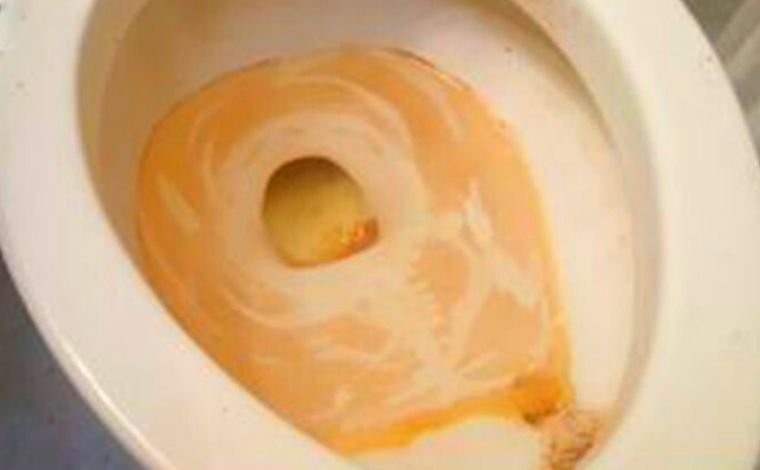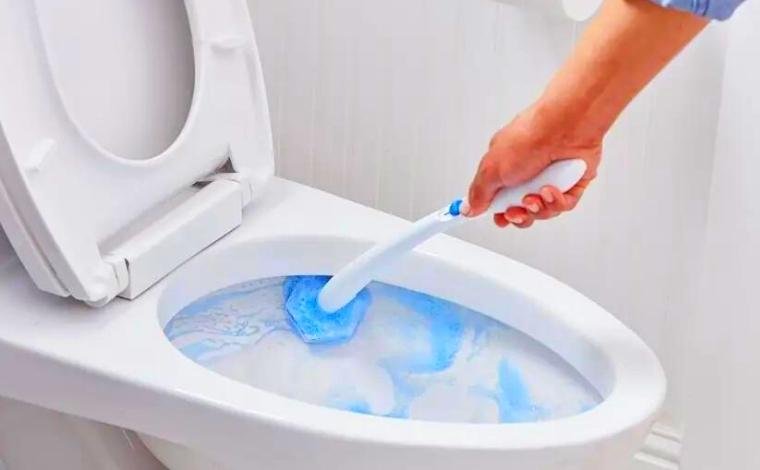When you finally return home after a relaxing vacation, the last thing you want to see is brown, dirty toilet water. You expect your bathroom to look clean and fresh, but instead, you’re greeted by a rusty-colored bowl that smells unpleasant. Disgusting, right?
This is a common issue many homeowners face after being away for several days or weeks. The good news? It’s usually easy to diagnose and fix. In this article, you’ll learn why toilet water turns brown after vacation, what causes it, and how to restore your toilet to its spotless condition.
Let’s dive in.
Why Does Brown Water Appear in the Toilet After Vacation?
When your toilet isn’t flushed for a long time, several things can happen inside the tank, pipes, and bowl. Water sits stagnant, minerals settle, bacteria multiply, and metal pipes may start to corrode. As a result, when you flush the toilet after coming home, you may notice brown or rust-colored water coming out.
Here are the most common causes — and the right ways to fix each one.
1. Rust and Corrosion in Old Pipes
If your house has old iron or galvanized steel pipes, rust is the most likely culprit. When water sits inside those metal pipes for a long time, oxygen reacts with the iron and forms rust (iron oxide). This rust then mixes with water and gives it a reddish-brown or orange tint.
Over time, small flakes of rust can also break off and settle in your toilet tank or bowl, creating ugly stains that are difficult to remove.
If your home was built several decades ago and the plumbing hasn’t been updated, you’re likely dealing with pipe corrosion.
⚙️ How to Identify a Rust Issue
- The brown color appears not only in your toilet but also in taps, sinks, and bathtubs.
- The water clears up after a few seconds of running the tap.
- You can see fine reddish particles in the toilet tank.
If these match your case, rust is the reason.
✅ How to Fix Rusty Water
- Replace Old Iron Pipes
The permanent fix is to replace corroded pipes with PVC or PEX pipes, which don’t rust and last for decades. - Flush Your Plumbing System
Run all faucets for several minutes after you return from vacation. This helps remove standing water and rust particles. - Install a Whole-House Water Filter
Filters designed to remove iron and sediment will keep your water clear and safe. - Clean Toilet Stains Properly
If you notice rusty stains in your toilet bowl, use a strong toilet cleaner like CLR PRO or follow a natural method using vinegar and baking soda.- Pour 1 cup of vinegar into the bowl.
- Add ½ cup of baking soda.
- Let it sit for 10–15 minutes, scrub, and flush.
If stains persist, use a professional cleaner or check this guide: How to Clean a Toilet.
Related: How to Remove Hard Water Stains from a Toilet
2. Hard Water and Mineral Deposits
If your pipes are new and there’s no rust, hard water could be the issue. Hard water contains high levels of minerals such as calcium, magnesium, and iron.
When the toilet isn’t used for days, these minerals settle and react with oxygen, producing brownish or yellowish discoloration. This may also lead to rough deposits along the rim or tank called limescale.
⚙️ Signs of Mineral Build-Up
- The toilet water turns brown only after it sits unused for a few days.
- You see chalky white or brown residue near the waterline.
- Faucets, showerheads, or tiles also have white deposits.
✅ How to Fix Mineral Deposits
- Flush Several Times
Often, simply flushing the toilet a few times will clear the brown color. - Deep Clean the Toilet
Use a descaling cleaner or vinegar solution. Pour vinegar into the tank and let it sit overnight to dissolve deposits. - Install a Water Softener
If you live in an area with hard water, install a water softener system to prevent mineral build-up. - Clean Regularly
Regular weekly cleaning prevents minerals from building up again.
Related: How to Get Rid of Toilet Ring
3. Organic Matter and Bacterial Growth
If you’ve been away for a long vacation (more than a week), your home’s drainage and toilet system go dormant. When water sits stagnant for days, it creates the perfect environment for bacteria, mold, and algae.
These microorganisms can cause water discoloration — typically brown, greenish, or black — and produce a foul odor when you flush.
Even small traces of organic waste left behind before you left home can decompose and create this issue.
⚙️ Signs of Organic Contamination
- The toilet water smells bad even after flushing.
- The bowl has a slimy brown film.
- Other fixtures (like bathroom sinks) may have similar odors.
✅ How to Fix Organic Build-Up
- Flush the Toilet Repeatedly
Flush several times to push out stagnant water. - Clean with Vinegar and Baking Soda
Pour one cup of vinegar and one tablespoon of baking soda into the bowl. Let it bubble for 10–15 minutes, scrub, and flush. - Use an Antibacterial Toilet Cleaner
Use a cleaner designed to remove mold, mildew, and bacteria. - Disinfect the Tank and Bowl
Remove the tank lid, pour ½ cup of bleach or disinfectant, let it sit for 10 minutes, and flush thoroughly.
Related: What Can I Put in My Toilet Tank to Make It Smell Better?
4. Sediment Build-Up in Water Supply
Sometimes the problem isn’t in your toilet but in your main water supply. If your area experiences maintenance or temporary shutdowns while you’re away, sediment may accumulate in the pipes.
When water flow resumes, those sediments get stirred up and flow into your toilet, making the water look brown or muddy.
✅ How to Fix Sediment Problems
- Run cold water taps in your kitchen and bathroom for 5–10 minutes to flush the system.
- If the brown color persists, contact your local water supplier to check for line maintenance or contamination reports.
You can also use a sediment pre-filter for your home to prevent this in the future.
5. Rust in the Toilet Tank or Components
Even if your home’s plumbing is in good condition, the metal parts inside your toilet tank can rust. Components such as bolts, the flush valve, or the fill valve may corrode when exposed to stagnant water.
When you return from vacation, you’ll notice that the first flush releases brownish water caused by this internal rust.
✅ How to Fix Rusty Toilet Parts
- Open the tank lid and check for rust spots.
- Replace rusty bolts or washers with stainless-steel parts.
- Use a toilet tank cleaner to remove residue.
- If corrosion is severe, consider replacing the entire flush mechanism.
Is Brown Water in the Toilet Dangerous?
In most cases, brown toilet water is not harmful. The discoloration usually comes from iron or mineral deposits, not from sewage contamination. However, it can make your bathroom look unhygienic and create unpleasant odors if ignored.
Still, there are a few exceptions:
- If the brown water smells like sewage or rotten eggs, it could indicate bacterial contamination or a broken sewer line.
- If your entire plumbing system delivers brown water (not just the toilet), you should get your water tested for safety.
Ignoring brown water for too long can also lead to:
- Bacteria and mold growth
- Permanent stains on porcelain
- Clogged pipes and valves
So, even if it’s not immediately harmful, it’s best to clean and fix the issue right away.
How to Prevent Brown Water in the Toilet Before Going on Vacation
You can easily avoid this unpleasant surprise by preparing your bathroom before leaving for your next trip. Here are a few preventive steps:
- Flush and Clean the Toilet Thoroughly
Use a toilet cleaner to remove existing stains and bacteria. - Add Vinegar or Baking Soda
Pour a small amount into the bowl before leaving to keep bacteria and mold from forming. - Shut Off the Water Supply
Turn off the toilet’s water valve if you’ll be away for more than a week. This prevents pressure build-up and leaks. - Ask a Neighbor to Flush Occasionally
If you’ll be gone for several weeks, a friend or neighbor can flush once or twice a week to keep the water fresh. - Check the Water Filter System
Ensure your filters and softeners are functioning properly before leaving.
These simple actions can save you from cleaning headaches later.
When to Call a Plumber
If you’ve tried all the above methods but your toilet still releases brown or discolored water, the problem might be deeper in your plumbing system.
You should contact a professional plumber if:
- Brown water appears in multiple fixtures (sinks, showers, etc.).
- The toilet bowl keeps refilling with rusty or dirty water even after cleaning.
- You suspect corroded pipes or a main line issue.
A professional inspection can pinpoint the exact cause and prevent further damage.
Final Discussion
Taking a vacation helps you relax and recharge — but returning to a brown, smelly toilet can spoil that post-holiday mood. Fortunately, most causes are simple to fix. Whether it’s rust, hard water, organic build-up, or sediment, flushing and cleaning usually restore your toilet to normal within minutes.
If it’s a recurring problem, don’t ignore it. Rusty pipes or bacterial growth can worsen over time and affect your home’s overall plumbing health.
So next time you plan a trip, follow the preventive steps above to keep your toilet and plumbing in great shape. A few minutes of preparation can save hours of cleaning later.
Enjoy your vacation — and come back to a clean, fresh, sparkling toilet every time!
✅ Related Articles
- How to Remove Hard Water Stains from a Toilet
- How to Get Rid of Toilet Ring
- How to Clean a Toilet
- What Can I Put in My Toilet Tank to Make It Smell Better?
Hi, this is Robert Crossan, the owner of this website, has 17 years of experience in the installation, maintenance, and repair of toilets and plumbing systems. After completing the Level 2 Basic Plumbing course in 2005, I started working in both domestic and commercial buildings as a professional plumber. So I can figure out the core difference between different toilet models and brands. It also helped me monitor their work performance and setbacks.